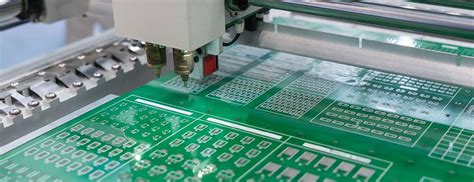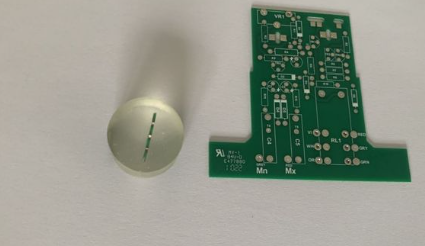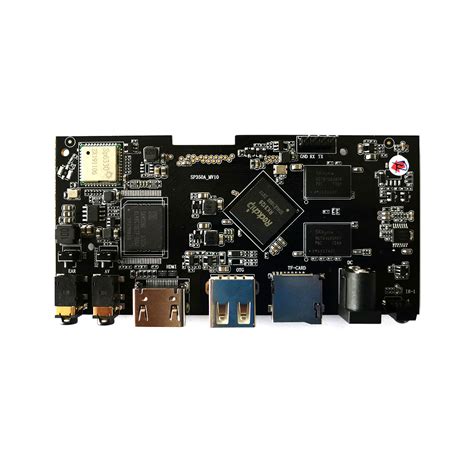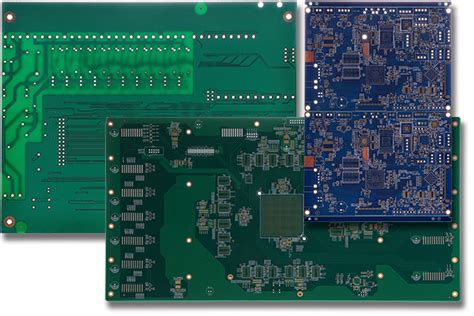Efficient PCB Prototype Assembly Services for Your Projects
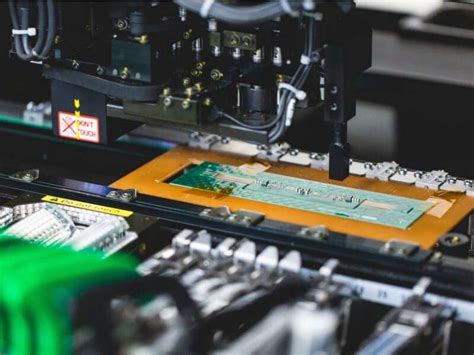
Key Takeaways
In the realm of electrical engineering, understanding the importance of PCB assembly is essential for transforming innovative ideas into viable products. PCB prototype assembly services enable project managers and engineers to iterate quickly on designs while maintaining quality. When leveraging these services, one can expect numerous benefits, such as reduced production times and increased accuracy in manufacturing.
A streamlined PCBA process implementation not only enhances the speed at which prototypes are created but also allows for regular updates and modifications based on early testing feedback. This iterative approach significantly aids in refining product characteristics before full-scale production.
Key considerations when employing pcb assembly services include selecting a partner with proven expertise and access to the latest technological advancements. Understanding these elements can ultimately lead to successful outcomes that fulfill both design specifications and user needs.
Here is a table summarizing the essential points:
| Key Element | Importance |
|---|---|
| Efficient Processes | Reduces time to market |
| Quality Assurance | Ensures reliability in final products |
| Partner Selection | Critical for access to technology |
| Iterative Design | Facilitates timely adjustments |
By grasping these key takeaways, stakeholders can effectively harness the potential of pcb prototype assembly services, paving the way for successful project completions in an increasingly competitive landscape.
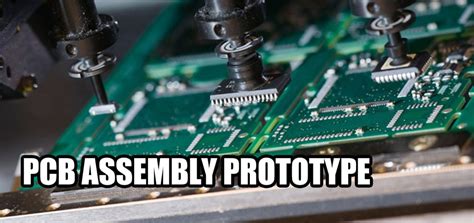
Introduction to PCB Prototype Assembly Services
In the realm of electronic design, PCB prototype assembly services play a pivotal role in turning concepts into concrete products. As businesses strive to innovate and bring their products to market swiftly, understanding the significance of efficient PCB assembly becomes essential. These services not only streamline the manufacturing process but also ensure that designs are optimally realized. By utilizing specialized techniques and advanced technology, providers of PCBA can perform high-quality assembly which aligns with design specifications. This meticulous approach allows for faster iterations, reducing the time spent on revisions and modifications. Additionally, effective prototype assembly can lead to cost savings by identifying potential issues early in the production cycle. Hence, organizations that recognize the value of pcb assembly services can enhance their operational efficiency while meeting market demands with agility. Embracing these services equips businesses with a competitive edge in navigating the complexities of product development and delivery.
Benefits of Efficient PCB Prototype Assembly
Efficient PCB prototype assembly services offer a myriad of advantages that can significantly enhance the overall success of electronic projects. One of the primary benefits is the ability to reduce development time. By employing streamlined processes and expert techniques in PCBA, teams can swiftly move from design to prototype, allowing for quicker iterations and adjustments based on testing feedback. This agility in development leads to faster product launches, which is vital in today’s competitive market.
Moreover, efficient assembly services ensure high-quality production. Utilizing advanced technologies and skilled labor during the PCB assembly process minimizes errors and defects, which is crucial for creating reliable electronic products. As a result, businesses can maintain their reputation while simultaneously meeting stringent quality standards.
Cost efficiency is another significant benefit. By optimizing workflows and minimizing waste through precise techniques in PCB assembly, companies can lower their production costs without compromising on quality. This not only helps in maintaining budget constraints but also allows for better allocation of resources towards innovation and development.
“Investing in efficient PCBA processes today leads to a greater return tomorrow.”
In summary, adopting efficient PCB prototype assembly services not only accelerates project timelines but also enhances the quality and cost-effectiveness of electronic product development. These benefits are essential for companies aiming to stay ahead in an ever-evolving technological landscape.
Key Processes in PCB Assembly
The pcb assembly process encompasses a series of intricate steps designed to ensure that each component is precisely integrated onto the printed circuit board (PCB). Initially, the process begins with design verification, where engineers assess the design files for any potential mistakes that could affect functionality. Once verified, the next step involves the sourcing of components, which requires careful selection to meet both quality and cost-efficiency. Following this, the PCB fabrication takes place, with attention paid to factors like board thickness and layer counts.
After fabrication, the assembly phase starts with Surface Mount Technology (SMT) or Through-Hole Technology (THT) methods, depending on component types. The usage of specialized machines ensures accurate placement of components on the board. Once all parts are placed, soldering follows—usually through reflow for SMT or wave soldering for THT—where solder connections are formed. Once this is complete, rigorous testing processes are implemented to verify that each assembly meets rigorous quality standards before it is packaged and delivered. Efficient handling of these key processes in pcba is essential not only for achieving high-quality output but also for enhancing overall project timelines. Each stage incorporates essential quality checks that influence the final functionality and reliability of electronic products in a competitive market environment.
Essential Considerations for High-Quality Assembly
When it comes to pcb assembly, ensuring high quality is paramount. The success of any electronic project heavily relies on the precision and reliability of the pcba process. One of the essential considerations is the quality of materials used during assembly. High-quality components not only enhance performance but also prolong the lifespan of the final product. Another critical factor is the expertise of the assembly team. Skilled technicians understand the intricate details involved in pcb prototype assembly service and can recognize potential issues before they escalate into major problems. Additionally, it’s important to implement rigorous testing protocols throughout the assembly process. This includes visual inspections and functional tests to ensure that each board meets your design specifications and operational requirements. Furthermore, a robust communication channel between project managers and technical teams can greatly improve transparency, helping identify challenges early and fostering quicker resolution. Ultimately, prioritizing these considerations will not only enhance product quality but also contribute to accelerating time to market by minimizing delays caused by rework or defects. Thus, a strategic approach to pcb assembly can greatly benefit your overall project outcomes.
Accelerating Time to Market with Prototype Services
In today’s fast-paced technological landscape, pcb assembly services play a crucial role in bringing innovative products to life. Efficient PCB prototype assembly not only ensures that designs are realized with precision but also significantly accelerates the time to market. This speed is essential for companies looking to maintain a competitive edge. The pcba process is streamlined through specialized techniques and advanced machinery, allowing for rapid iterations and modifications needed during the prototyping phase. By utilizing high-quality materials and following best practices in assembly, businesses can reduce production delays and enhance product reliability. Furthermore, choosing a proficient assembly partner that understands the intricacies of your design can lead to improved turnaround times without compromising quality. Ultimately, incorporating effective PCB prototype assembly services into your workflow can lead to faster delivery of innovative solutions that meet customer demands while optimizing resource usage and minimizing risks associated with product development. Whether launching a new gadget or upgrading an existing technology, the importance of swift pcb assembly cannot be overstated as it lays the foundation for successful market introduction.

Choosing the Right PCB Assembly Partner
Selecting the appropriate PCB assembly partner is crucial for the success of any electronic project. To ensure high-quality PCBA, it is important to evaluate several key factors. Start by assessing the partner’s experience in handling projects similar to yours; this includes examining their portfolio and client testimonials. A reliable partner should demonstrate familiarity with various PCB assembly techniques and standards, which can significantly impact the performance and reliability of your final product.
Additionally, consider their capabilities in managing different volumes, from small batches for prototypes to larger runs for mass production. Their ability to scale operations as your project progresses can save both time and resources. Communication is another essential element; an effective partnership thrives on transparent dialogue about timelines, challenges, and updates.
Moreover, investigate the partner’s quality assurance processes. This involves checking if they utilize advanced testing methods to detect potential defects early in the production cycle. A strong focus on quality not only improves the integrity of your PCBA, but it also minimizes costly revisions down the line.
Lastly, don’t overlook logistical aspects such as lead times and shipping options, as these can affect your project’s timeline significantly. By carefully assessing these factors, you will be better positioned to choose a PCB assembly partner that aligns with your technical requirements and project goals effectively.
Common Challenges and Solutions in PCB Prototype Assembly
In the realm of PCB assembly, navigating through challenges can significantly impact the quality and efficiency of your projects. One common challenge is component placement errors, which can lead to faulty assemblies. To mitigate this, employing precision machinery and automated placement techniques during the PCBA process is crucial. Another issue is managing design changes during assembly; frequently altering the design can result in delays and additional costs. Establishing a robust communication channel between designers and assemblers helps ensure that all parties are aligned on modifications. Additionally, achieving thermal management within the prototypes poses another hurdle, especially with densely populated boards. A well-considered layout design that incorporates thermal relief features effectively addresses this issue. Finally, maintaining quality control is paramount; implementing regular inspections throughout the assembly process helps catch defects early, ensuring a high-quality output that meets client specifications. Therefore, understanding these challenges alongside their respective solutions is essential for optimizing PCB prototype assembly services, ultimately leading to successful project outcomes.

Future Trends in PCB Assembly Services
As the demand for pcb assembly grows in various industries, there are several notable trends shaping the future of PCB prototype assembly services. One of the most significant trends is the increased integration of automation and advanced technologies in the assembly process. With smart manufacturing and the Internet of Things (IoT), companies can achieve greater efficiency and accuracy in pcba operations. Additionally, the push towards miniaturization is prompting engineers to design more compact and complex circuit boards, which poses new challenges for assembly services.
Moreover, sustainability has become a focal point; many assemblers are adopting eco-friendly practices and materials in response to global environmental concerns. This includes using lead-free solder and optimizing waste management processes. The importance of rapid prototyping cannot be understated either; as industries strive to bring products to market faster, efficient prototype assembly services are critical for quick iterations and testing.
Another trend is customization, where businesses seek tailor-made solutions that align with specific project needs rather than one-size-fits-all approaches. This bespoke service can enhance the performance and reliability of electronic products. As we look forward, the convergence of these innovations will not only improve quality but will also redefine how businesses approach their pcb prototype assembly needs in a competitive landscape that demands agility and excellence.

Conclusion
In the rapidly evolving landscape of electronics, efficient PCB prototype assembly services play a crucial role in accelerating project timelines and enhancing product quality. When undertaking a new project involving pcb assembly, understanding the benefits and methodologies of these services can significantly contribute to achieving your design goals. The integration of advanced technologies and streamlined processes not only ensures high-quality assembly but also helps in reducing potential errors that can occur during manual production. It is essential to consider factors such as material selection, design intricacies, and testing procedures when engaging with a PCB assembly partner. With the right approach, you can achieve a balance between speed and quality, making your project not just viable but also competitive in the market. Future trends indicate a growing reliance on automation and real-time analytics to further improve these services, ensuring that your pcba projects are not only efficient but also aligned with the latest industry standards. By focusing on these elements, you can facilitate a smooth transition from prototype to production while maintaining the integrity of your design objectives.
FAQs
What is PCB prototype assembly?
PCB prototype assembly refers to the process of fabricating and assembling printed circuit boards (PCBs) for initial evaluation and testing. This service allows designers and engineers to validate their designs before mass production.
Why choose efficient PCB assembly services?
Efficient PCB assembly services help streamline project timelines, reduce costs, and ensure high-quality outputs that meet design specifications. By implementing advanced techniques and technologies, these services minimize errors in the final product.
What should I consider during the PCB assembly process?
When selecting a service for pcb assembly, it’s important to consider factors like the provider’s experience, quality assurance protocols, production capabilities, turnaround time, and how well they can accommodate your specific project requirements.
How can prototype assembly accelerate time to market?
By opting for quick-turn pcba services, companies can shorten lead times significantly. Rapid prototyping allows for faster iterations based on testing feedback, helping businesses to refine their products and release them to market sooner.
What common challenges arise in PCB prototype assembly?
Challenges may include design errors, component sourcing issues, or delays in manufacturing. However, partnering with an experienced provider can lead to effective solutions tailored to prevent these obstacles from impacting project timelines.
For further information on transforming your project with exceptional pcb assembly services, please click here: Andwin PCB Assembly Services.


